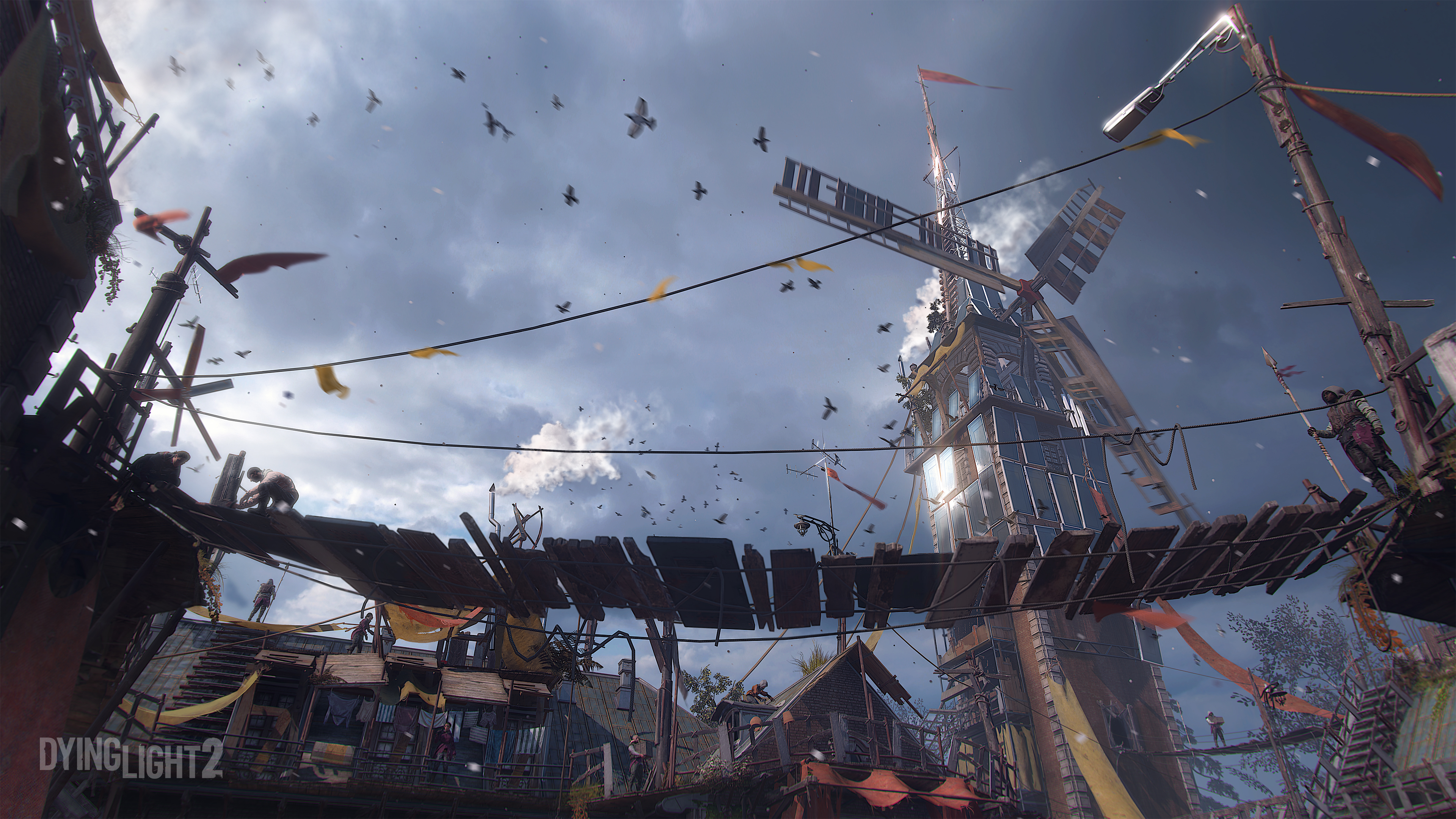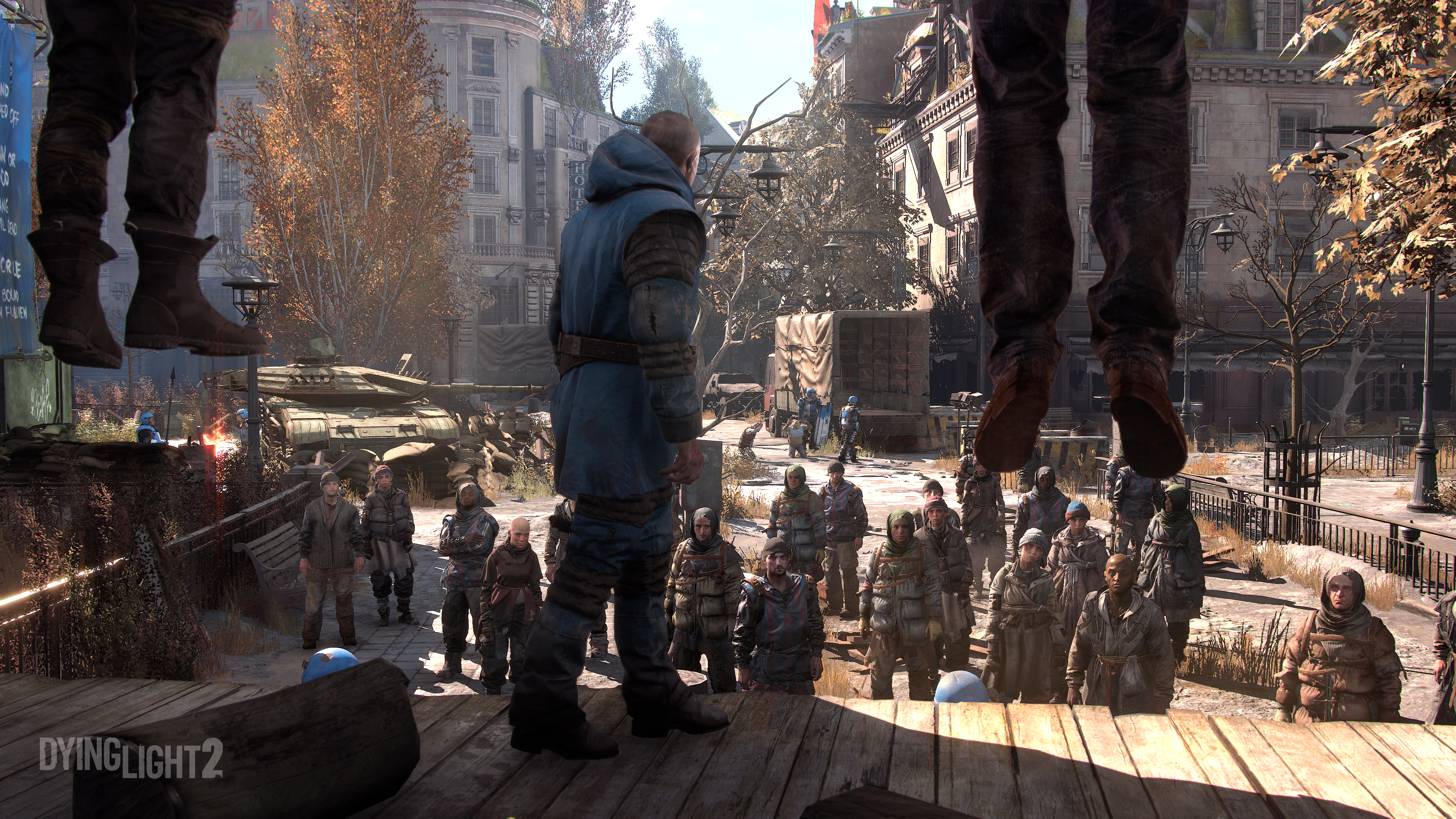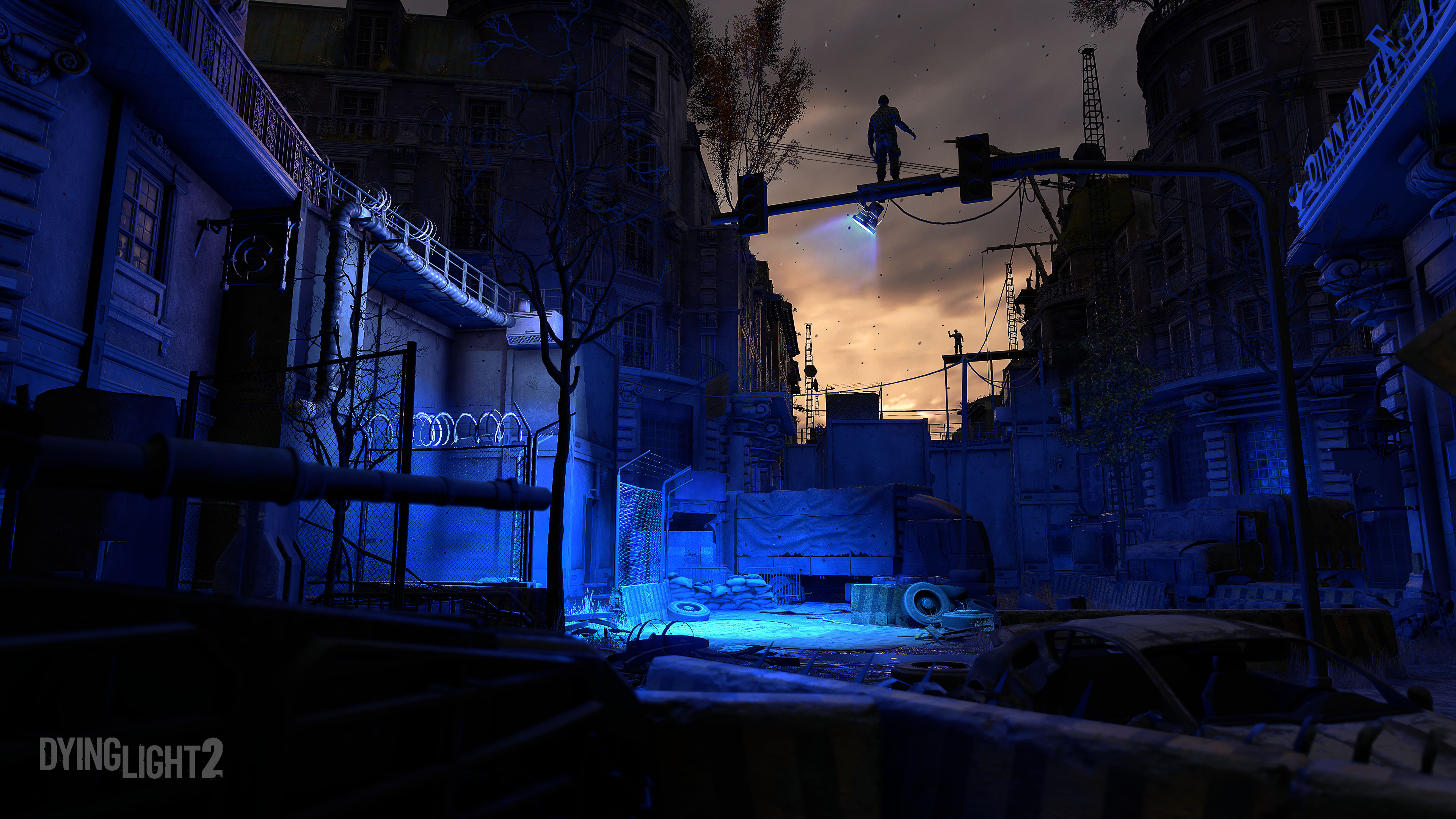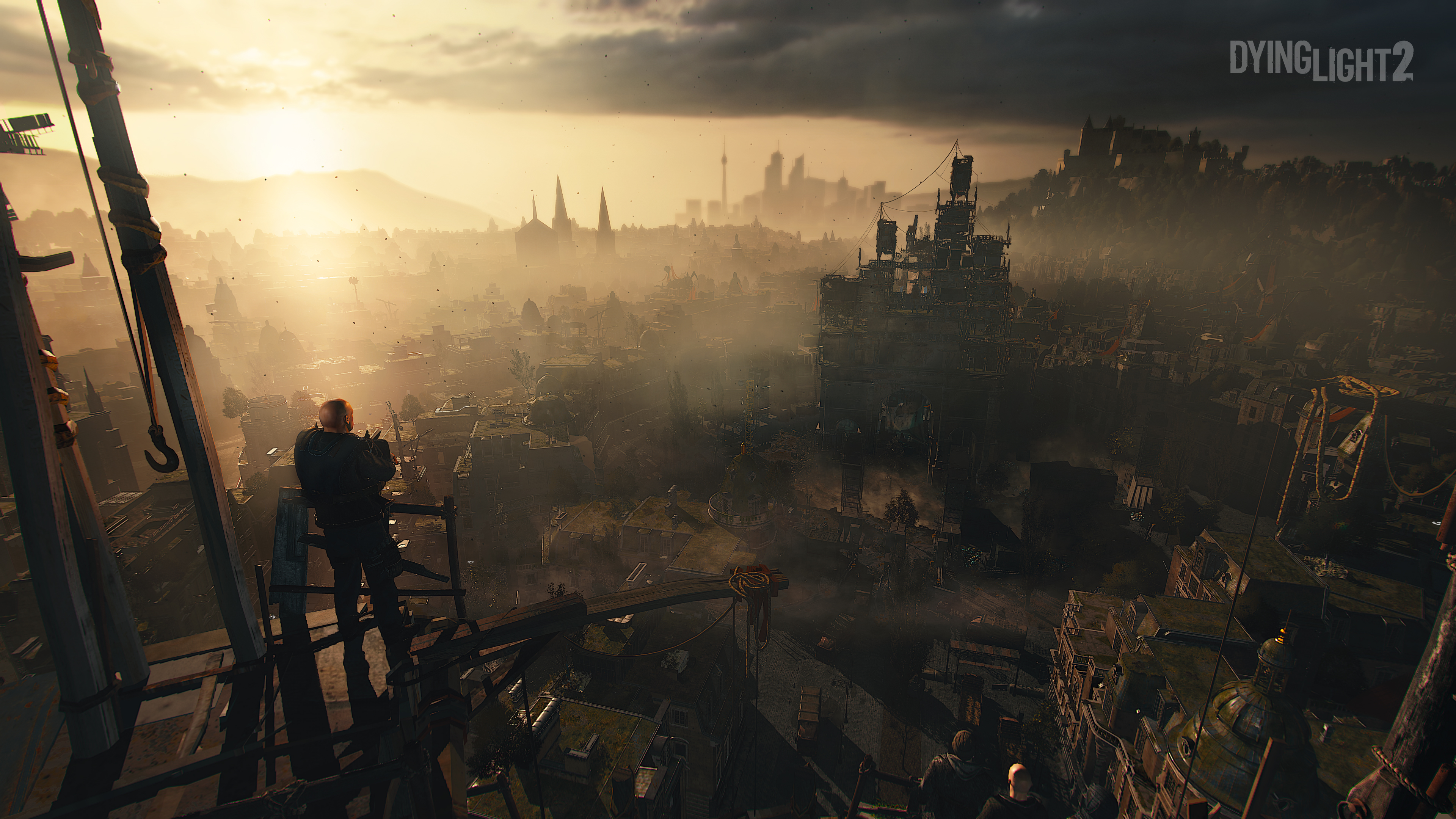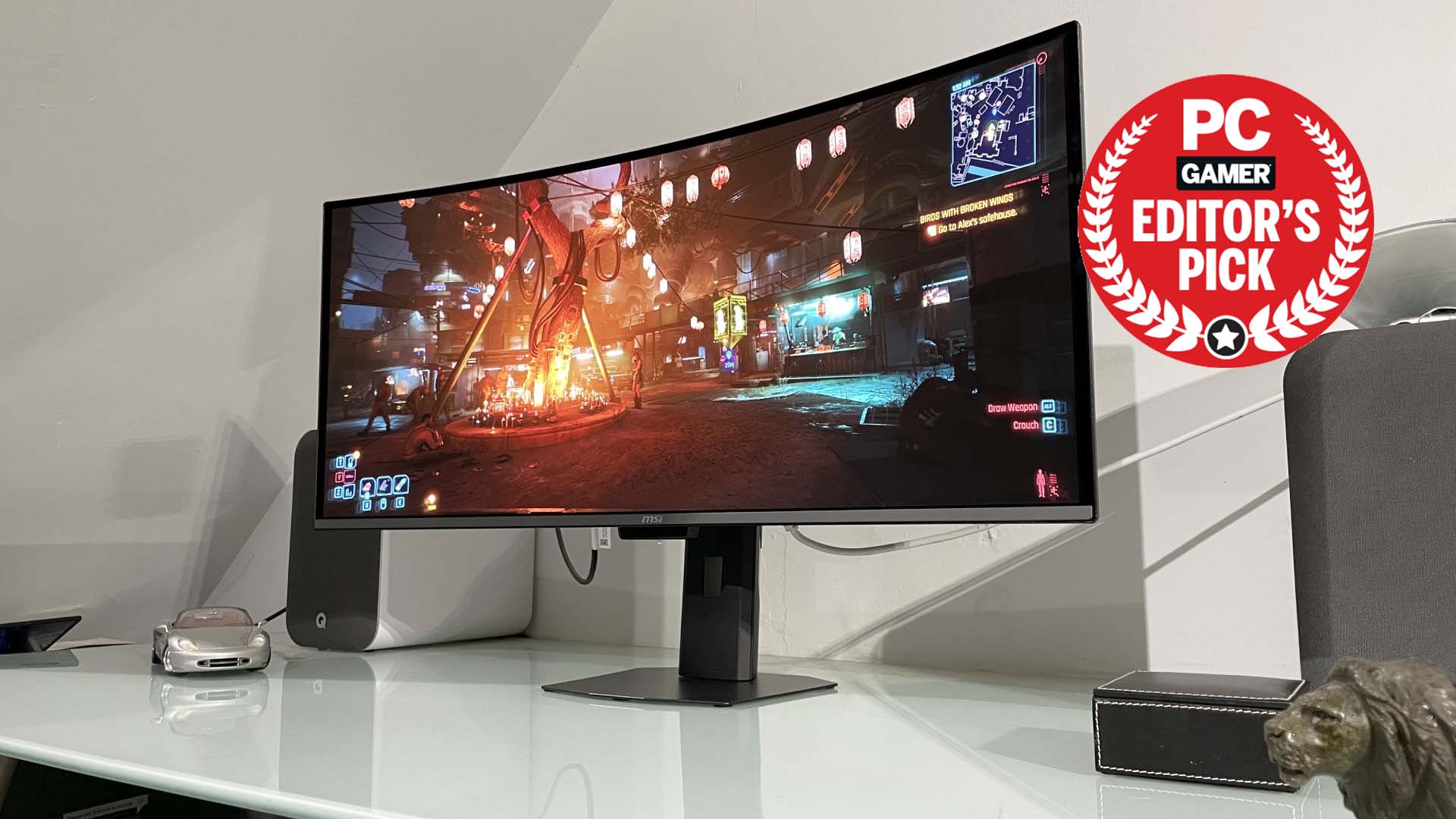Dying Light 2's stunning setting promises to fix the first game's biggest flaw
Techland isn't just looking to make a bigger sequel, but a more narrative-focused one too.
Despite having a blast with it, I cannot recount a single major plot point of Dying Light, Techland's zombie survival FPS. I can't tell you the main character's name or his motivations. I can't even remember the name of the vaguely Turkish city it takes place in. For all of Dying Light's successes—the fluid first-person parkour, the gory combat, and rewarding if lightweight RPG systems—storytelling and worldbuilding were not one of them. And lead designer Tymon Smektala agrees.
During E3, I got an extended hands-off preview of Dying Light 2 and also spoke with Smektala about how this sequel plans to not only expand on the ideas of the first, but also fix one if its biggest weaknesses. "We also felt like the narrative in Dying Light wasn't as strong as it should or could be," Smektala says. "But it was a new franchise so there were a lot of risks and a lot of uncertainty. We just had to focus on the things that we were comfortable and good with, and that was gameplay. We did a good job with gameplay, but we lacked the resources and expertise to create a narrative that was as good."
During Microsoft's press conference, it was celebrated RPG designer Chris Avellone who took the stage to reveal Dying Light 2 with a scripted demo that promised that our choices would have a dramatic impact on its world. It sent a clear message that Dying Light 2 would emphasize story and setting in a way that the first game never did.
It sent a clear message that Dying Light 2 would emphasize story and setting in a way that the first game never did.
Gone is the brown climate, replaced by a splash of urban European sprawl injected with just enough genre fantasy aesthetic that the initial reveal trailer confused me, not as to where Dying Light 2 was set but when. Turns out, it's set 15 years after the first game in an as-of-yet unnamed European city—the last bastion of humanity in a world full of infected. Techland is calling it the "Modern Dark Ages," and it already makes for a much more memorable setting than Dying Light's.
There's still the ramshackle post-apocalyptic feel of humans trying to rebuild inside the bones of a once-great society, but the Medieval vibe is evident when you glimpse the cityscape. Banners stream from buildings crowned by rickety windmills, and soldiers wear painted armor that evokes knights more than it does special forces. It's all very surreal—especially when you round a corner and see what looks like Paris' Arc de Triomphe but with a black market bazaar built on top and serviced by an elevator made from a school bus.
Decisions, decisions
The demo I saw was effectively a more detailed slice of the same walkthrough given during Dying Light 2's initial announcement. As a stranger in this European city, Smektala tells me that the player is looking for an object which can "change the future of humankind." But to find it, you'll need to involve yourself with the political goings on of the city's survivors and the various factions they belong to.
The specific premise for this demo was simple: Some minor characters managed to nab control of a water tower in one of the city's several districts. The Peacekeepers, one of the few institutions of law and order left in the world, sent an emissary to negotiate with these lucky folks so that the water could be shared with all citizens. Unfortunately, that emissary has gone missing, so now it's our job to find out what happened.
Keep up to date with the most important stories and the best deals, as picked by the PC Gamer team.
Dying Light 2 might look like an FPS, but there's an cRPG undercurrent running throughout its dilapidated European streets.
As the reveal trailer shows, choices in these quests can have wildly different outcomes. When we find the smugglers, we can choose to eliminate them and let the Peacekeepers claim the district for themselves. Doing so will transform this dangerous 'burb into a relatively safe place to be, with guards patrolling the streets, access to life-restoring water, and new infrastructure that makes parkouring around the immediate area a lot easier.
That all sounds swell, but the Peacekeepers are also authoritarian assholes with a penchant for stringing people up by their necks. Siding with the smugglers, however, will turn the area into a dog-eat-dog den full of unsavory types—but at least they're not under the thumb of some ruthless government. While you might not have access to free water or feel particularly safe, the Smugglers will cut you into their business and let you collect a handsome tribute every so often.
It's these world-altering choices that form the backbone of Dying Light 2's striking new vision. No longer are you just picking option A or B based on an immediate reward but instead making decisions that have implications on the story, how you move around the city, and your relationship with its locals. Dying Light 2 might look like an FPS, but there's an cRPG undercurrent running throughout its dilapidated European streets.
When the Peacekeepers move in, the entire district transforms. Walls are built, outposts stationed, and their blue banners drape lazily from buildings in the immediate area. And that's just one part of Dying Light 2's approach to layered consequence-driven choices. "We tried to avoid making this repetitive," Smektala says. "In one region you might make one choice between two factions and in another region you make a choice between three or four completely different ones. And maybe you make that choice not just by a dialogue option but by achieving or failing one of the missions."
Though the demo didn't give me a sense of what other factions are out there, Smektala did tell me that these big choices with major factions are supplemented by much smaller moment-to-moment choices with "mini-factions." These smaller choices won't change an entire district, but they will still have an effect. The Hunters, a faction that Smektala says is currently being worked on, will sometimes ambush the player and chase them if they piss them off. "So now you have a region that looks one way because of a choice you made, but then you have these people who appear who are chasing you," Smektala says.
Night Terrors
It feels odd that I've made it this far into a Dying Light 2 preview without talking about zombies, doesn't it? It's because the hordes of infected aren't really the focus in Dying Light 2. "This is not just a zombie game where zombies are chasing you and that's it," Smektala explains. "We want to tell people that, hey, this is quite different and this is bigger. We're not talking that much about the infected or the zombies because we want the players to realize this is more about the humans this time around."
But that isn't to say that zombies are an afterthought. After all, the day-night cycle and how it changed their behavior was one of Dying Light's most original features. That system is back but updated to make venturing out at night actually worthwhile—a problem many had with Dying Light.
During the day, infected are weakened by the sunlight and will avoid shambling out into the open. Instead, they'll cluster in the darkness of buildings to wait for nightfall. Venturing indoors during the day can be extremely risky, as it's basically like going to a house party where everyone is packed shoulder to shoulder and wants to rip your face off. But these spaces, Smektala says, are full of good loot that players will want to collect. At night, the zombies will clear out, making exploring indoor environments much safer—but you risk drawing the ire of zombies that are now much more aggressive. It's a gamble: Do you go during the day when it's safe outside but risky inside, or at night when it's the opposite?
Of course, the volatiles are back too. These bastards will chase you full sprint and were absolutely terrifying in Dying Light. "They almost work like the police in GTA, if you make too much noise or too much chaos they'll come for you," Smektala tells me. "We also played a lot with the systems that govern the night, and I think people will see those complexities." The UV flashlight makes a return and will let you scare off infected you might stumble into but, if things go really poorly, you can now hide inside of garbage bins. Venturing out at night will also open up new paths for beating certain quests, so the whole system feels far more woven into the fabric of Dying Light 2.
That's just one of several new improvements coming to systems that Dying Light already handled well. The crafting is being vastly expanded, and Smektala estimates there's around 50 new effects that can be added to weapons you build. Combat still looks familiar, but there's a new emphasis on using the environment to help finish off opponents. In one fight, the player picked up a nearby bucket and whipped it at an enemy's head to create an opening to drop kick him off of a tower. Similarly, the amount of parkour moves you can pull off has been doubled, increasing the fluidity with which you can move around the densely packed European buildings.
Run and gun
It's these big expansions of Dying Light's core systems that, when coupled with its vivid new look, make Dying Light 2 one of the coolest games I saw at E3.
One big change that might cause some worry among players is to Dying Light 2's stamina system. Now, stamina impacts just about everything, including parkour, instead of just combat and sprinting. When hanging from a ledge, for example, the meter will slowly deplete. If you perform a move like jumping or wall running, you'll use more. Smektala says it's designed to enforce more strategic uses of parkour, but won't necessarily limit the feeling of freedom when moving around the city. During a chase scene, for example, it didn't feel like the player was inhibited by stamina, but it did play a major role during what Techland is calling "parkour challenges."
In order to get to the water tower to speak with the smugglers, the character had to navigate a series of tense and deadly jumps inside the tower itself. It's something that was in Dying Light, but with the added pressure of a stamina meter slowly ticking down as you read the environment and plot your next jump. When the player barely made it to safety after a series of wall runs and rope swings with only a sliver of stamina left, I caught myself holding my breath.
It's these big expansions of Dying Light's core systems that, when coupled with its vivid new look, make Dying Light 2 one of the coolest games I saw at E3. Smektala tells me that when the concept artists showed the team their first ideas for what a Modern Dark Age would look like, it "blew their minds." There was a moment during the demo as the sun was setting behind the expanse of gothic architecture that gave me an inkling of that sensation. It was a scene that felt timeless.
With over 7 years of experience with in-depth feature reporting, Steven's mission is to chronicle the fascinating ways that games intersect our lives. Whether it's colossal in-game wars in an MMO, or long-haul truckers who turn to games to protect them from the loneliness of the open road, Steven tries to unearth PC gaming's greatest untold stories. His love of PC gaming started extremely early. Without money to spend, he spent an entire day watching the progress bar on a 25mb download of the Heroes of Might and Magic 2 demo that he then played for at least a hundred hours. It was a good demo.
